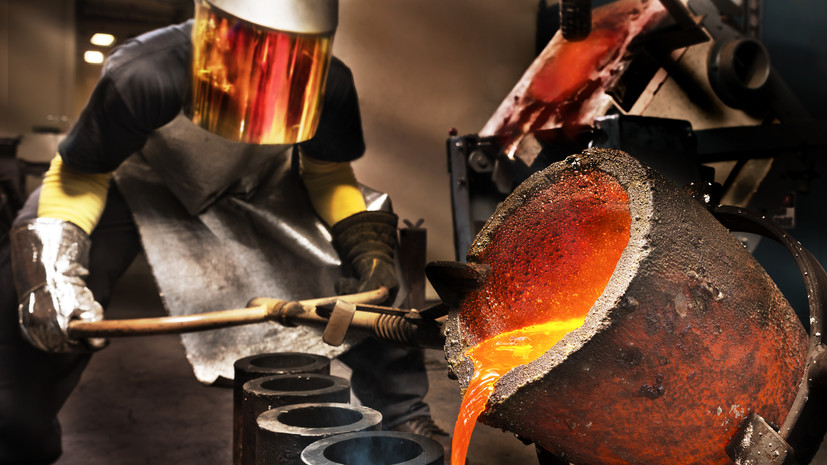Scientists from Belgorod State National Research University, MISIS University of Science and Technology (Moscow) and St. Petersburg State Marine Technical University have developed new heat-resistant and durable alloys for aircraft engines.
Experts have experimentally established in laboratory conditions that the best strength indicators are found in an alloy of niobium and chromium, and heat resistance in an alloy of niobium, titanium and chromium.
The press service of the Russian Science Foundation reported this to RT.
The study was supported by a grant from the foundation.
The results were published in the journal Scripta Materialia.
In modern aircraft engines, gas heats up to 1200–1650 degrees Celsius.
Long before such temperatures are reached, ordinary metals begin to deform and then melt.
To solve this problem, special heat-resistant nickel-based alloys are used, forcedly cooled and protected by coatings.
Recently, refractory metals, which have a very high melting point and wear resistance, are being considered to replace such alloys.
Gettyimages.ru
© Monty Rakusen
However, many refractory metals have a number of disadvantages - for example, they are brittle and easily oxidize.
Therefore, designers and metallurgists are looking for optimal combinations of metals in which their beneficial properties are maximized and their negative properties are minimal.
Combinations that contain five or more different metals in equal proportions are called high-entropy alloys.
Previously, it was believed that the more refractory components in such an alloy, the better its characteristics.
For example, chromium and niobium have high melting points (1857°C and 2477°C, respectively), and it was thought that adding titanium and zirconium to them would create alloys with superior high-temperature strength (over 1000°C) and improved oxidation resistance.
In the new study, scientists made 12 different alloys to test which ones were best suited for structural applications.
Experts created combinations of four refractory metals - niobium, chromium, titanium and zirconium - and compared their combinations with each other, conducting a series of experiments to study strength and heat resistance.
To test the strength, the researchers compressed the samples in an experimental setup at various temperatures, from room temperature to 800°C.
The highest indicator was found in an alloy of niobium and chromium - three times stronger than others.
To evaluate the heat resistance of materials, scientists kept the alloys in a furnace at 1000°C.
According to experts, alloys can be divided into heat-resistant and those that are susceptible to the aggressive effects of oxygen and cannot be used at high temperatures without protective coatings.
In this experiment, the highest result was demonstrated by an alloy of three components: niobium, titanium and chromium.
Gettyimages.ru
© SafakOguz
Scientists also found that the addition of zirconium has a negative effect on the heat resistance of the alloy, as it prevents the formation of a protective layer on the surface of the material.
According to experts, they will continue to study the developed alloys to assess the possibility of their industrial use.
“The niobium-titanium-chromium alloy, or niobium-chromium alloy, is expected to be used in the production of next-generation engines for the aircraft and space industries, as well as other areas that require materials that can withstand high loads at elevated temperatures.
This will allow engines to operate stably when heated to 1000°C, and in the future to replace existing less heat-resistant materials, reducing energy losses for forced cooling of parts,” Nikita Yurchenko, candidate of technical sciences, senior researcher at the laboratory of bulk nanostructured materials at Belgorod State National Research University, told RT .

